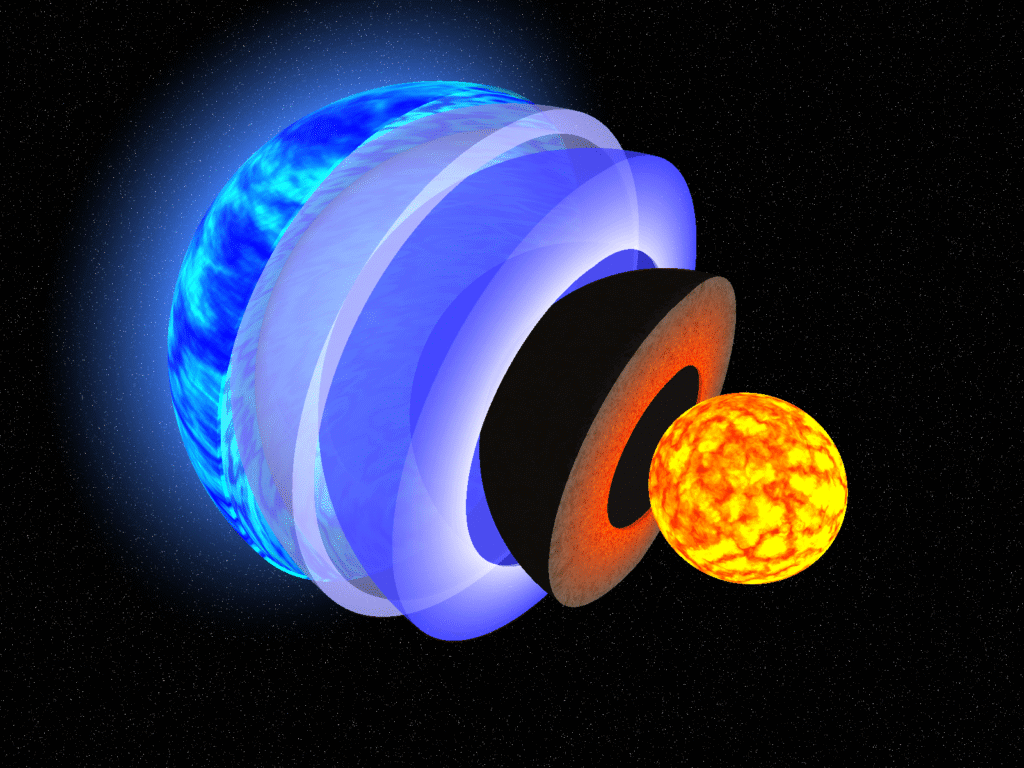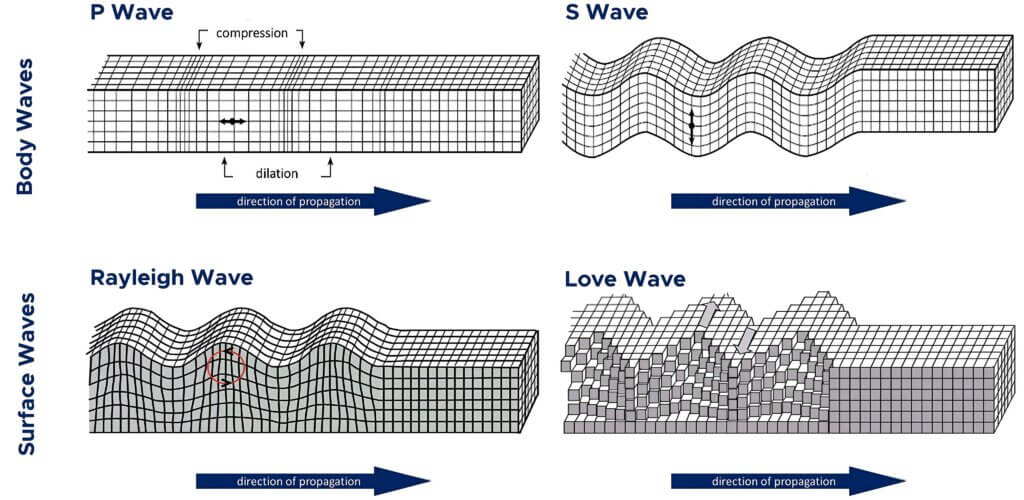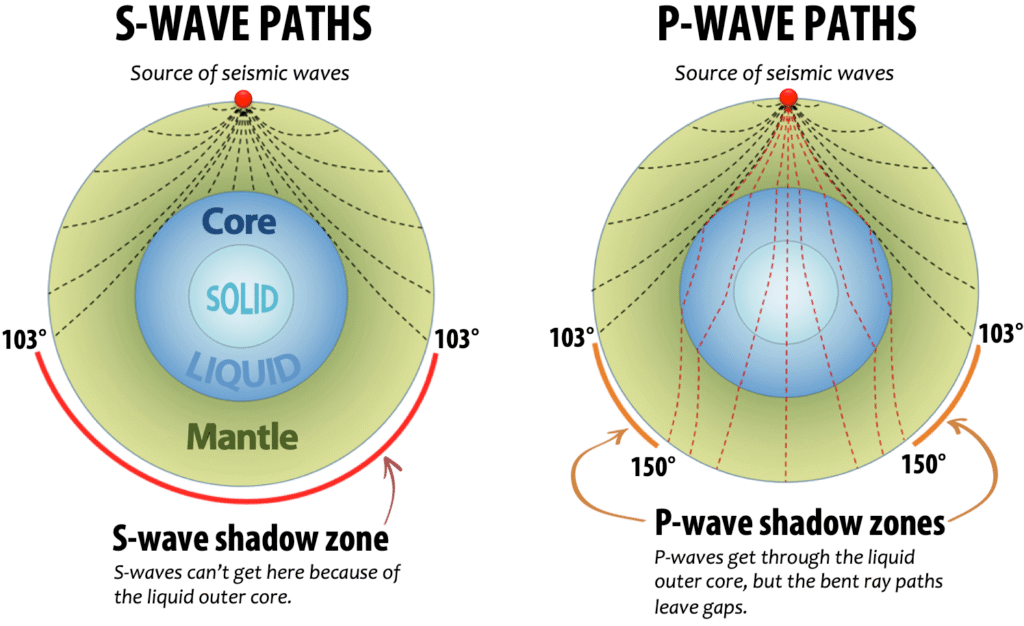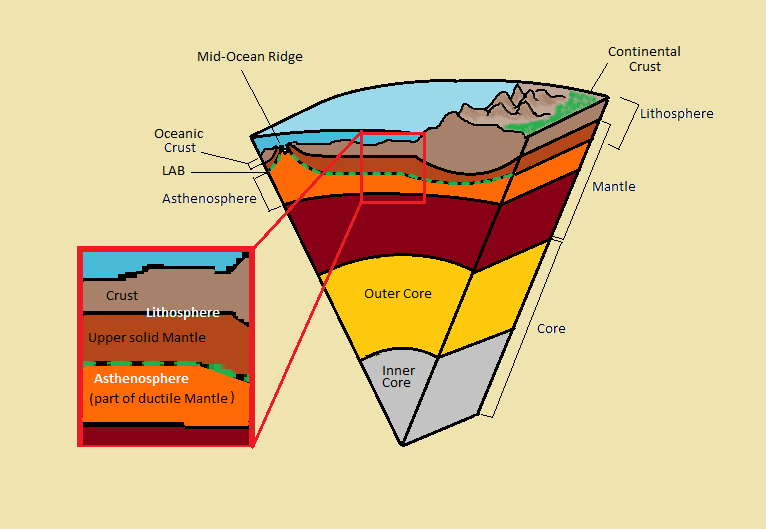For a long time, the idea that the Earth is hollow has been a popular myth. This idea suggests a large empty space inside the planet. The theory dates back to the 17th century, when the astronomer Edmond Halley suggested that the Earth was composed of concentric shells. Modern science has disproven this theory.

A hollow Earth would conflict with basic principles of physics and geology. Evidence from seismic waves, gravity, and the magnetic field shows that the Earth is a solid planet with a dense, layered structure. The evidence is not just one piece of data but many observations that fit together to show a solid, dynamic world.
- Seismic Waves: Vibrations from earthquakes travel through the planet in specific ways. These patterns show a complex, layered structure. If the Earth were hollow, the wave patterns would be very different from what we see.
- Gravity: Measurements of gravity on the Earth’s surface show that the planet has a dense mass inside. The measured gravitational forces are not consistent with a hollow structure and require a dense, solid core.
- Magnetic Field: The Earth’s magnetic field is created by the movement of a liquid metallic core. A hollow planet could not produce this magnetic field.
The Problem of Direct Observation

Humans cannot physically go into the Earth’s interior. The Earth’s radius is about 6,400 km. The deepest hole ever drilled, the Kola Superdeep Borehole, only reached 12 km, which is a tiny fraction of the distance to the centre. This is why we use indirect methods, mainly seismology, to study the Earth’s interior.
Evidence from Seismology

The study of seismic waves is a way to “see” inside the Earth. When an earthquake or explosion occurs, it releases energy as vibrations that travel through the planet. These vibrations are recorded by sensitive instruments called seismometers, providing a wealth of information about the properties of the materials the waves are travelling through, including their density and state of matter (solid, liquid, or gas).
An earthquake generates two main categories of waves, each with distinct properties: body waves and surface waves. A seismogram shows the arrival times of these waves, with the fastest waves arriving first. The time difference between their arrivals is a fundamental tool for geologists to understand the Earth’s internal structure.

Body Waves
Body waves travel through the interior of the Earth.
- P-waves (Primary Waves): These are also known as compressional waves. They are the fastest seismic waves, moving by compressing and expanding the material in the same direction the wave is travelling. P-waves can pass through all states of matter—solids, liquids, and gases—though their speed changes with the density of the medium.
- S-waves (Secondary Waves): Also known as shear or transverse waves, these are slower than P-waves. Their motion is perpendicular to the direction of wave propagation, causing material to shake from side to side. The most critical characteristic of S-waves is that they cannot travel through liquids or gases; they can only pass through solid materials.

Surface Waves
Surface waves travel along the Earth’s surface and do not go deep into the planet. They are slower than both P- and S-waves but are responsible for much of the destructive motion felt during an earthquake.
- Rayleigh Waves: These waves cause particles to move in an elliptical, rolling motion. The movement has both a vertical and horizontal component in the direction of wave propagation. * Love Waves: These waves cause particles to move in a purely horizontal, side-to-side motion, perpendicular to the direction of the wave’s travel.
The Shadow Zones
The most important evidence for Earth’s layered interior comes from “shadow zones.” These are areas on the opposite side of the planet from an earthquake where no direct seismic waves are detected. The location of these zones provides proof for the Earth’s internal structure.
The first major discovery was the S-wave shadow zone. Scientists found that S-waves were completely absent from seismographs located more than 104 degrees away from an earthquake’s origin. Since S-waves are stopped by liquid, this proves that a large, liquid layer exists inside the Earth. This was the first proof of a liquid outer core. The image below shows this S-wave shadow zone, where the waves are blocked by the liquid core.
The P-wave shadow zone provided more detail. P-waves are not stopped by the liquid outer core, but they are bent, or “refracted,” as they enter it. This bending creates a shadow zone between 104 and 140 degrees from the earthquake’s origin, where no direct P-waves are received. The right portion of the image shows how the P-wave paths are curved as they pass through the core, missing the shadow zone.
In 1936, Inge Lehmann discovered that weak P-waves were being detected inside the P-wave shadow zone. She concluded that these waves had been refracted a second time by a solid inner core at the centre of the liquid outer core. This provided evidence that the Earth has a solid, inner core.
The existence of a liquid layer (S-wave shadow zone), a P-wave shadow zone, and weak P-wave arrivals within that zone all work together to show that the Earth has a solid inner core surrounded by a liquid outer core. A hollow Earth would not create these specific wave patterns.

More Evidence for a Solid Earth
Matter of Density
The Earth’s overall density is another argument against a hollow interior. The average density of the Earth is about 5.5 g/cm³. However, surface rocks have a much lower density, about 2.7 to 3.0 g/cm³. For the planet’s average density to be so high, the interior must be made of much denser material. Density increases with depth. The outer core has a density of around 12 g/cm³, and the inner core is even denser, at 13 to 14 g/cm³ and up to 17 g/cm³. This high density inside the Earth, which is caused by pressure and heavy metals, is not consistent with a hollow or low-density interior. The core’s high density accounts for about one-third of the Earth’s total mass.
The Geodynamo: Earth’s Magnetism
The Earth’s magnetic field is a key piece of evidence. The field protects the planet from solar radiation. It is created by a process called the geodynamo. This process is driven by the movement of the molten iron-nickel alloy in the outer core. The liquid in the outer core is in constant motion, and this movement of electrically charged material creates electric currents, which in turn generate a magnetic field. This process needs a liquid outer core and could not happen in a hollow Earth.
Meteorites
Scientists also study meteorites to learn about the Earth’s interior. Meteorites are remnants of the material that formed our solar system. Iron and stony-iron meteorites, which are made of iron and nickel, are thought to be the cores of ancient, shattered planetesimals. The fact that Earth’s crust lacks iron and nickel suggests that these heavy elements sank to the centre of our planet when it was forming. This process, called planetary differentiation, explains why the Earth has a dense, metallic core. A hollow Earth would not have undergone this process.
Vulcanicity
Volcanic eruptions provide some clues about the Earth’s interior. In some cases, eruptions bring up rock fragments from the deep mantle to the surface. Studies of these rocks show that the mantle is not a uniform layer. The composition of these rocks is different from others, which suggests that the mantle contains different “reservoirs” of material that may have formed early in Earth’s history. This confirms that the mantle is a large, active system, not a static shell.
Vertical Profile: Earth’s Layers

All of this evidence from seismology, density, gravity, magnetism, meteorites, and volcanoes helps us create a detailed model of the Earth’s interior. The Earth is a series of distinct, concentric layers.
The Crust and Lithosphere
The crust is the outermost layer and is a thin, rigid shell, ranging from 5-70 km in thickness. It is composed of silicate rocks and is less dense than the mantle. The crust is divided into two types: continental crust (thicker and less dense) and oceanic crust (thinner and denser).
The lithosphere is a rigid, combined layer that includes the crust and the uppermost, solid part of the mantle. It is divided into tectonic plates that move over the layer below it.
Table 1: Earth’s Layered Structure
| Layer Name | Approximate Thickness (km) | Composition | Physical State | Approximate Temperature (°C) | Approximate Density (g/cm³) |
| Crust | 5-70 | Silicate rocks | Solid | 1,000 | 2.7-3.0 |
| Mantle | 2,900 | Iron & Magnesium Silicates | Semi-solid/Plastic | 1,000-3,500 | 4.5 |
| Outer Core | 2,200 | Molten Iron-Nickel alloy | Liquid | 3,500-4,300 | 12 |
| Inner Core | 1,250 | Solid Iron-Nickel alloy | Solid | 4,300-6,000 | 17 |
The Mantle and Asthenosphere
The mantle is a vast layer, approximately 2,900 km thick, making up about 84% of the Earth’s volume. It’s primarily composed of dense silicate rocks rich in iron and magnesium.
- Asthenosphere: The upper part of the mantle is known as the asthenosphere. This layer is ductile, meaning it is semi-solid and flows very slowly due to heat and pressure. The tectonic plates of the lithosphere “float” and move on this plastic layer.
The temperature in the mantle increases with depth at a rate of 2 to 3 degrees Celsius per 100 meters. The immense pressure keeps the rock in a solid state despite the high temperatures, as pressure increases the melting point.
Table 2: Properties of Seismic Waves
| Wave Type | Motion | Medium of Travel | Relative Speed | Effect |
| P-wave | Longitudinal (Compression) | Solids, Liquids, Gases | Fastest | Changes volume & density of material |
| S-wave | Transverse (Shear) | Solids Only | Slower | Shears or shakes material |
| L-wave | Elliptical/Side-to-Side | On Earth’s surface only | Slowest | Causes most surface shaking & damage |
The Core
The core is the densest part of the planet and is made primarily of an iron-nickel alloy. It is divided into two parts:
- The Outer Core: This is a liquid layer about 2,200 km thick. Its convective movement generates the Earth’s magnetic field. Temperatures range from 3,500°C to 4,300°C, hot enough to keep the alloy in a liquid state.
- The Inner Core: The inner core is a solid sphere with a radius of about 1,250 km. It is hotter than the outer core, with temperatures from 4,300°C to 6,000°C, but the extreme pressure forces it to remain in a solid state.
Summary
The scientific evidence shows that the Earth’s interior is a complex, multi-layered body. It is not hollow. The layers are:
- Crust: A thin, rigid outer layer.
- Mantle: A vast, solid but plastic layer that drives plate tectonics.
- Outer Core: A liquid layer of molten iron and nickel that creates the magnetic field.
- Inner Core: A solid sphere at the centre.
The idea of a hollow Earth is not supported by evidence. Seismic waves, density, gravity, and the magnetic field all point to a solid, layered Earth. A hollow planet would have different properties. Our understanding of the Earth’s interior is based on indirect observation and scientific analysis, revealing a dynamic and layered planet.